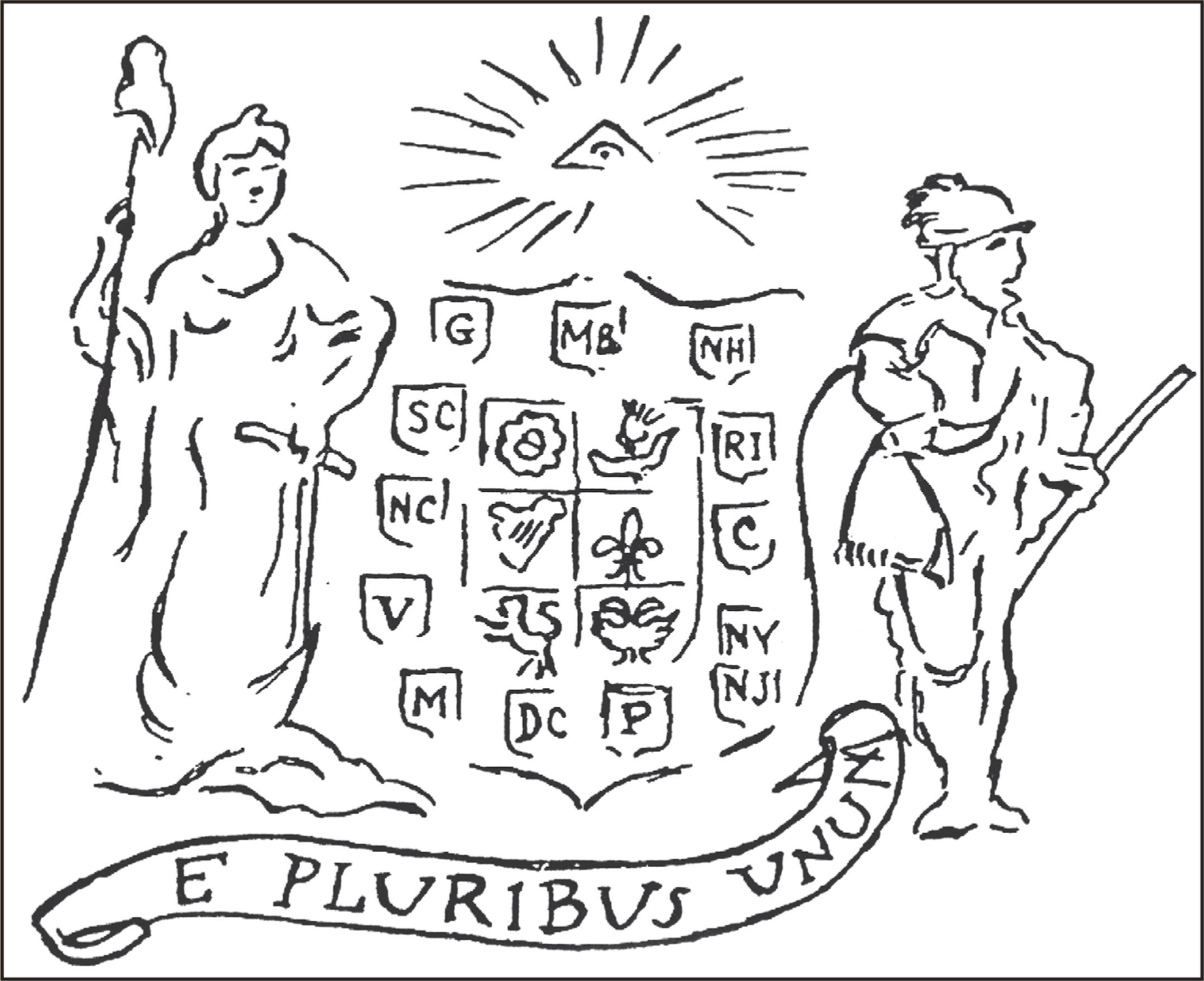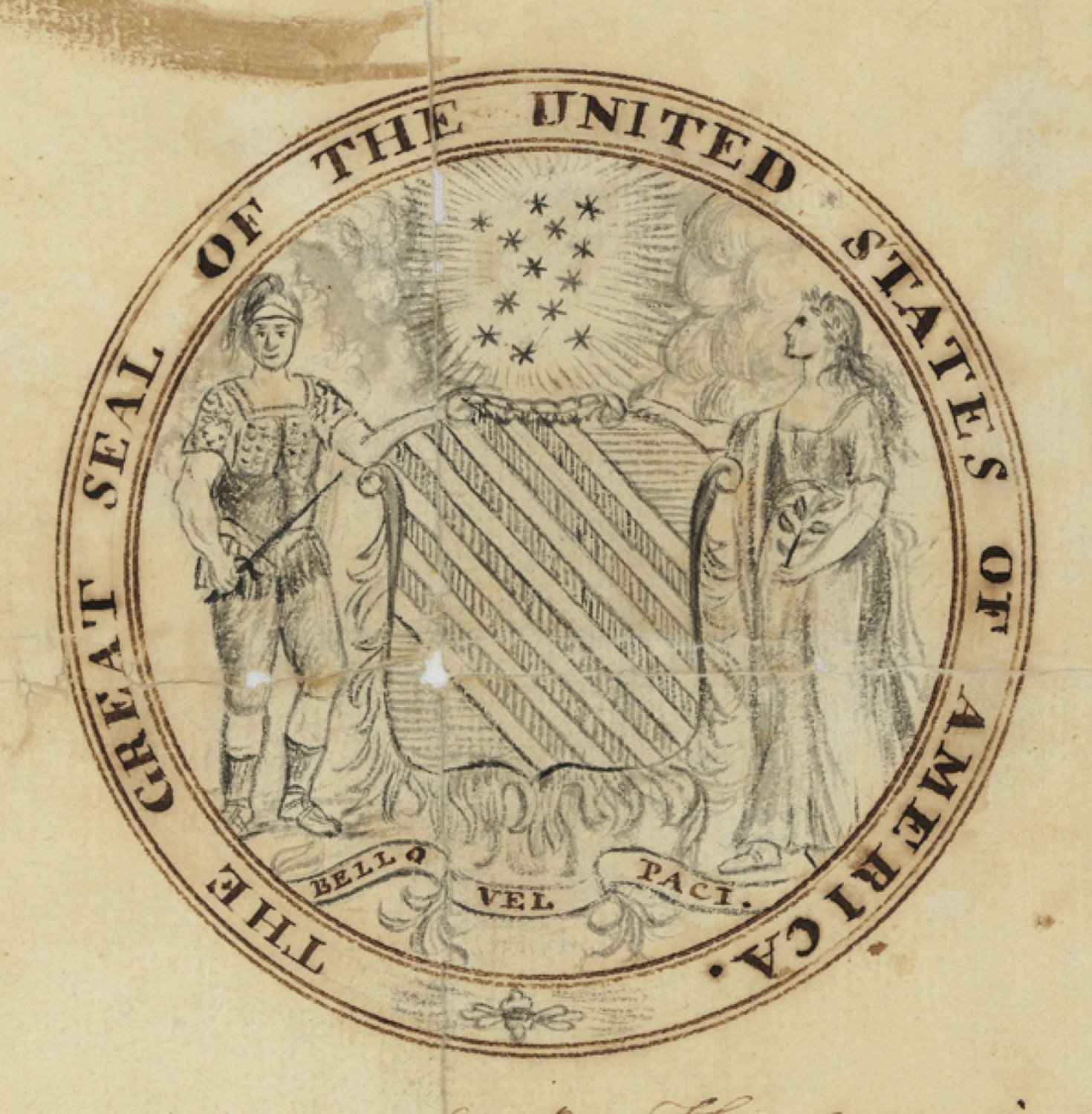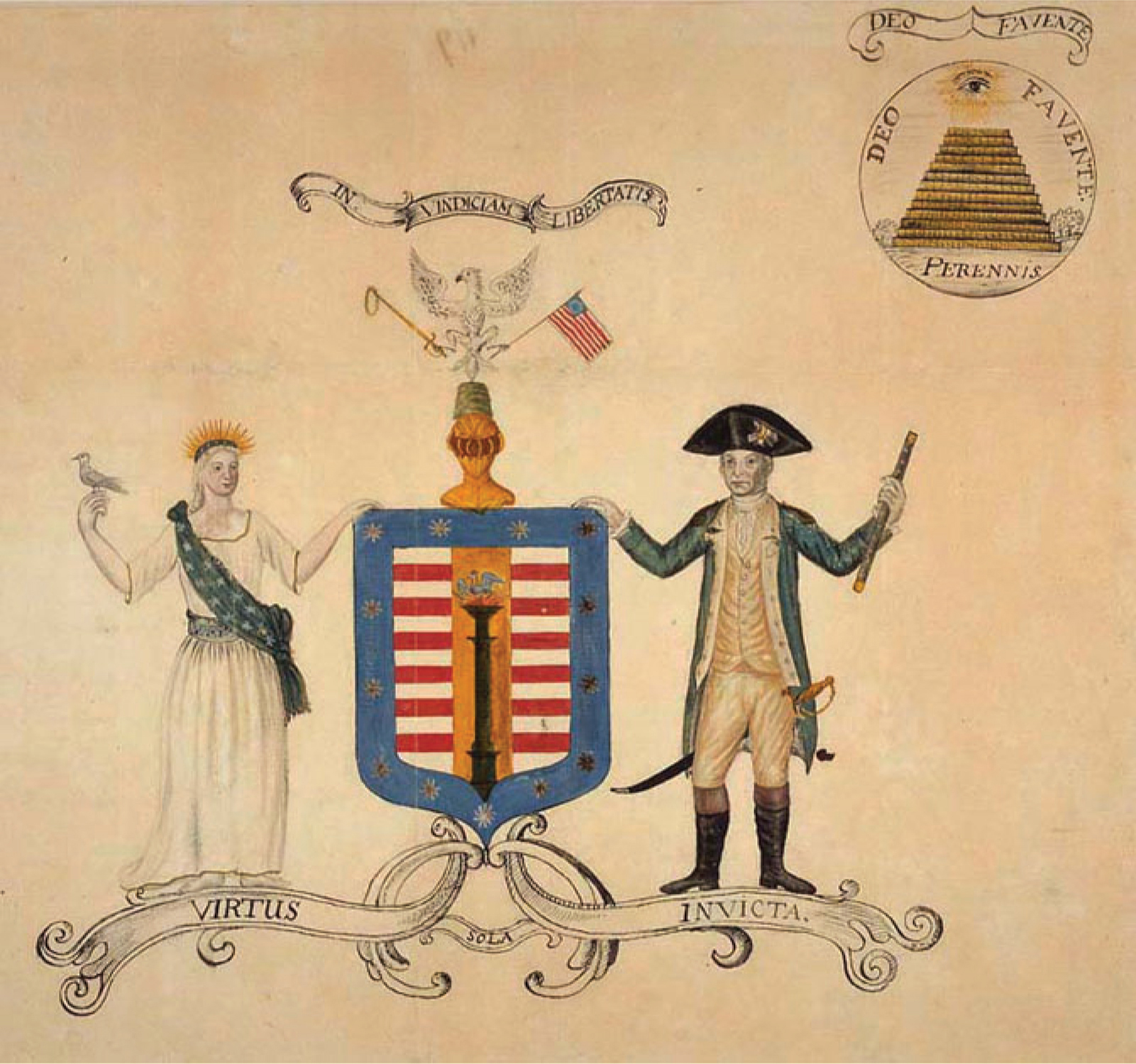The American Promise:
Printed Page 200
VISUALIZING HISTORY
The Great Seal of the United States
In 1776, Congress sought to produce an official “seal” or logo for the United States, just like all European monarchies had. Metal seals pressed into sealing wax were used to authenticate official documents and treaties.
The first entry, submitted by a French artist in Philadelphia, featured a decorated shield like a European coat of arms. A goddess of liberty and a rifleman in buckskin flank the shield, which depicts thirteen mini-


Four years later another artist prepared this crowded emblem with the Latin motto “For War or For Peace” at the bottom. In an earlier draft, the artist sketched an Indian warrior on the left, but a second draft changed this figure to a Roman centurion brandishing a sword, paired with a female figure holding an olive branch to signify peace. As before, a shield dominates the center but now carries thirteen diagonal stripes set underneath a cloud of randomly placed stars. Clearly the number thirteen had symbolic importance. Did they not anticipate there would be more states, and soon?
In 1782, Congress considered a third variation on the theme of war and peace: a classically gowned and crowned woman holds a dove; a soldier in a contemporary uniform wears a sword. The Latin mottoes read “In Defense of Liberty” (top) and “Only Virtue Unconquered” (bottom). A spread-


In June 1782, the congress knew that the peace treaty would soon require the seal. After dithering for years, they commissioned and approved the winning seal in just one week. The designer, a member of congress, combined several elements from the first three plans; can you identify them? How did the eagle change from its appearance in image 3? How are the themes of war and peace differently represented?
SOURCES: Pierre Eugene du Simitiere’s Design for the Great Seal, 1776: Library of Congress; Francis Hopkinson’s Design, 1780: National Archives; William Barton’s Design, 1782: National Archives; Charles Thomson’s Design, 1782: National Archives.
Questions for Analysis
- How do the various Latin mottos stack up as aspirational slogans for the new nation? Why did the congress choose Latin instead of English?
- Why did every proposal emphasize the twinned themes of war and peace? Can you suggest alternative themes?
- How was gender mobilized to embody specific themes? How did the male figures change over time? Did the female figures?
- The current version of the Great Seal likely sits in your wallet; check the $1 bill. Notice any changes?
Connect to the Big Idea
In addition to the Great Seal, in what other ways did the fledgling U.S. government engage in nation-